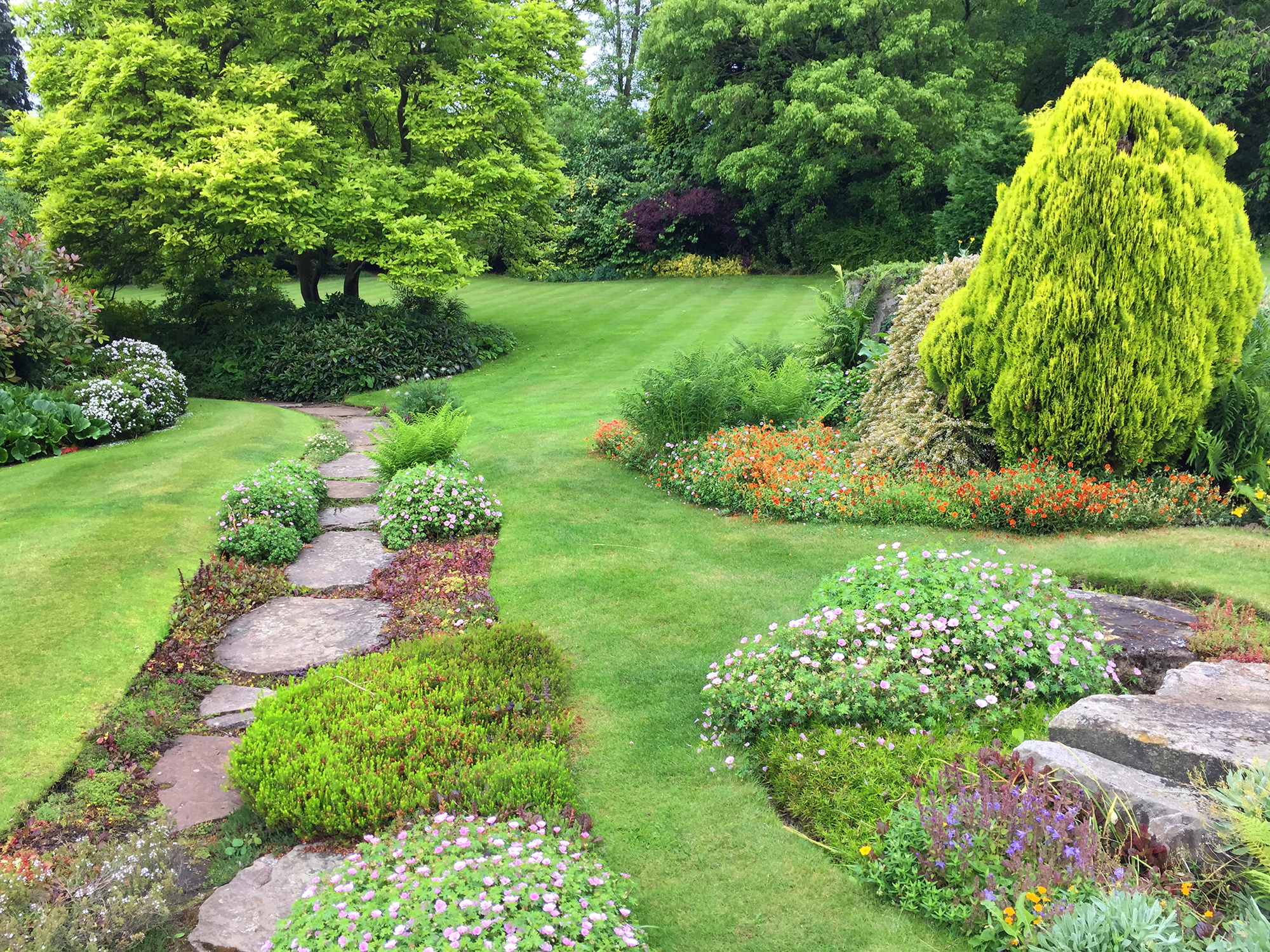When is the best time to water your lawn?
Discover when to water grass and how often and how much to ensure the lawn stays in great condition


The question of when is the best time to water your lawn is crucial to maintaining grass that’s lush. Water at the optimum time of day and get the frequency and quantity right and the grass will stay healthy and resilient.
Selecting the best fast-growing grass seeds can provide a beautiful green sward, but once it’s established, good watering practices are a must to maintain your choice for the backyard.
In short, the answer is that it's better to water your lawn first thing in the morning (ideally before 9.30am/10am), particularly in hot weather. It is better to do water grass at this time of the day because it's cooler and the wind is usually lighter and cooler, so there is less evaporation and more absorption than if it is watered later.
Below, we bring you the knowhow you need on when to water grass to keep the lawn luxuriant and avoid wasting water.
When is the best time to water your lawn?
Making a lawn green and thick requires a little work, as well as knowhow about when to water grass. ‘Water is obviously the lifeblood of any healthy lawn, but it can be difficult to understand when to water your lawn, how much to water it, and overall best practices,’ says Donnie Shelton, owner of Triangle Lawn Care of Raleigh, NC. These are the details.
What time of day to water grass?
Timing is important when you’re watering grass in order for your efforts to have maximum effect, and to conserve a precious resource.
‘During the summer I generally recommend watering in the early morning, or in the evening as a second-best option,’ says Donnie Shelton.
‘If you water your lawn during the middle of the day, especially in the summer, the sun will end up evaporating between 25 and 40 per cent of the water, which means your lawn will most likely be underwatered.
‘By watering when the sun isn’t as intense it ensures most of the water has time to seep down into the roots of the lawn.’
Design expertise in your inbox – from inspiring decorating ideas and beautiful celebrity homes to practical gardening advice and shopping round-ups.
If you have to water in the evening, don’t leave it too late, so it has a chance to dry out. ‘Overnight leaf wetness can benefit fungal pathogens,’ says turfgrass and horticulture science specialist Eric De Boer PhD of Simple Lawn Solutions.
Should you water grass every day when it's hot?
You shouldn't necessarily water grass every day when it's hot – every couple of days will be enough if you ensure the grass' root system is properly soaked. This is better than a quick watering every day which will quickly dry out.
Is it better to water longer or more often?
A balance between the two is best. Over-watering can stress the lawn as much as under-watering can. A thorough watering that is allowed to just about dry before the next watering will encourage strong root growth.
What are the signs grass needs watering?
Walking on the lawn will give you a good indication about when to water grass. ‘It is a good practice to wait until your lawn begins to show mild symptoms of water stress before deciding to irrigate,’ explains Eric De Boer.
‘This is apparent when you walk on the lawn in the evening and your footprints don’t bounce back but stay visible on the lawn for an extended period.’
Factors that influence when to water grass
There are many factors that will influence the frequency with which grass should be watered. ‘These factors include species of grass, soil type, and climate,’ says Eric De Boer. ‘As a broad generalization, cool season grasses will require irrigation more frequently than warm season grasses. This is because warm season grasses use water more efficiently than cool season grasses.
‘Soil type will also affect irrigation frequency. Sandy soils, low in organic matter, have a limited ability to hold plant-available water and drain quite freely. Clayey soils, on the other end of the spectrum, can hold much more water than sandy soils, but clays can hold some of the water so tightly that the water isn’t available to the lawn’s roots.
‘The climate also plays a role as sunny, windier days with low humidity will result in much more evaporation and plant transpiration compared to muggy days with stagnant air.’
How much water does grass need?
The amount of rainfall will influence when to water grass. ‘Aim to supply your lawn with a minimum of 1in of water per week, this includes rainfall,’ says Eric De Boer. ‘So the default position for your irrigation system should not be in the “on” position.
‘Aim to supplement the lack of rainfall each week with deep, infrequent irrigation events. Use a rain gauge to keep track of how much water Mother Nature has blessed you with; this will help you lower your water bill.’
How often should you water your lawn?
Avoid watering the lawn too often. ‘I generally recommend watering twice a week if you haven’t had significant rainfall this week,’ says Donnie Shelton.
Bear in mind that watering too often can cause problems. ‘Generally, it is a good practice to water deeply, as infrequently as possible, without completely stressing your lawn,’ says Eric De Boer. ‘Light, frequent irrigation applications keep the upper portion of the root zone and thatch layer moist. This can encourage the germination of weed seeds, give fungal pathogens the necessary moisture to grow, and it can also prohibit proper soil aeration.’
Can you overwater grass?
It is possible to overwater grass. The consequences of overwatering can include disease and overwatering deprives the grass of the oxygen it needs to live.
Bear in mind that the rules are different if you’re planting grass seed. ‘When watering a newly seeded lawn, the key is to keep the top inch of soil consistently moist but not soggy,’ says certified master gardener Gabriel J Croteau, consultant at Juliei Salone.
‘You’ll likely need to mist the seeded area once or twice a day, but to do more if it’s hot and dry outside. You’ll want to keep the top 2in of the soil moist until the new grass reaches roughly 3in. Then, you’ll water it the same as your other grass.’
Will watering dead grass bring it back?
Watering dead grass will not bring it back; watering dormant grass will bring it back. How can you tell the difference between dead and dormant? Take a small handful of brown grass and tug it gently. If it comes away easily in your hand, the roots have died and if it's dead. If it offers resistance, it's likely dormant and can be brought back to life with better weather and a good watering routine. Grass often becomes dormant in poor conditions to protect itself.

Sarah is a freelance journalist and editor. Previously executive editor of Ideal Home, she’s specialized in interiors, property and gardens for over 20 years, and covers interior design, house design, gardens, and cleaning and organizing a home for Homes & Gardens. She’s written for websites, including Houzz, Channel 4’s flagship website, 4Homes, and Future’s T3; national newspapers, including The Guardian; and magazines including Future’s Country Homes & Interiors, Homebuilding & Renovating, Period Living, and Style at Home, as well as House Beautiful, Good Homes, Grand Designs, Homes & Antiques, LandLove and The English Home among others. It’s no big surprise that she likes to put what she writes about into practice, and is a serial house renovator.